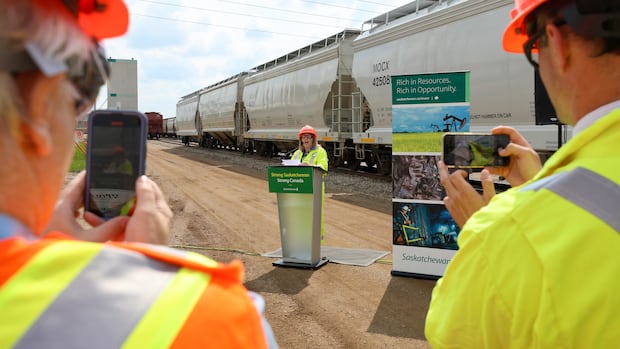Business
Saskatchewan Expands Mining Powers to Boost Industry Efficiency

Mining companies in Saskatchewan are reacting positively to the introduction of new legislative powers designed to enhance operational efficiency within the industry. On March 15, 2025, Saskatchewan’s Minister of Energy and Resources, Colleen Young, presented the Mineral Resources Amendment Act 2025 in the provincial legislature, which swiftly passed its first reading. The legislation aims to provide “stability” and “certainty” for mining operations in the region.
Pam Schwann, president of the Saskatchewan Mining Association, described the initiative as a “win for everybody.” She emphasized that increased efficiency will lower costs for mining companies while generating additional royalties for the government. The new powers will enable the government to designate specific “subsurface development areas,” allowing companies access to mineral resources that would otherwise remain untapped.
New Designation Powers and Their Impact
Under the new legislation, the energy and resources minister will have authority to designate subsurface development areas, which is crucial when private mineral owners are untraceable. This can occur when the owner has passed away or when multiple rights owners are inaccessible. Young highlighted the challenges faced by companies, stating, “At this current point, [companies are] having to mine either around those particularly large parcels of land or curtail their operations.”
The legislation stipulates that companies must conduct “significant work” to locate and negotiate with mineral rights holders within a five-year period before applying for a subsurface development area. If negotiations fail, the minister can step in to facilitate access, which Young believes will streamline mining operations and prevent valuable resources from being stranded.
Marnell Jones, director of public affairs for the Mosaic Company, expressed optimism about the changes. He noted that the company has faced inefficiencies in extracting potash due to difficulties in securing subsurface mineral rights. “We leave those minerals behind, stranded forever. We can’t go back and mine at a later date. So really the province loses out, as do we,” Jones explained. He estimated that through the new legislation, Mosaic could potentially access “about a half a billion dollars” worth of mineral rights.
Revenue Implications for Saskatchewan
Once the mineral rights are exploited and royalties are generated, the proceeds will contribute to Saskatchewan’s general revenue fund. Young clarified that if an individual later identifies themselves as a mineral rights holder, they can claim their share of the proceeds.
The legislative move comes at a time when the mining sector is increasingly significant for the province’s economy. Analysts suggest that the changes could provide much-needed support to the industry, particularly in the context of rising global demand for mineral resources. By facilitating easier access to subsurface rights, the government aims to position Saskatchewan as a competitive player in the mining sector.
As this new framework unfolds, stakeholders within the mining industry will be closely monitoring its impact on operations and revenue generation. The collaborative approach between the government and mining companies may serve as a model for enhancing efficiency and economic growth in the region.
-

 World4 months ago
World4 months agoScientists Unearth Ancient Antarctic Ice to Unlock Climate Secrets
-

 Politics2 days ago
Politics2 days agoSecwepemc First Nation Seeks Aboriginal Title Over Kamloops Area
-

 Entertainment4 months ago
Entertainment4 months agoTrump and McCormick to Announce $70 Billion Energy Investments
-

 Lifestyle4 months ago
Lifestyle4 months agoTransLink Launches Food Truck Program to Boost Revenue in Vancouver
-

 Science4 months ago
Science4 months agoFour Astronauts Return to Earth After International Space Station Mission
-

 Technology2 months ago
Technology2 months agoApple Notes Enhances Functionality with Markdown Support in macOS 26
-

 Top Stories4 weeks ago
Top Stories4 weeks agoUrgent Update: Fatal Crash on Highway 99 Claims Life of Pitt Meadows Man
-

 Sports4 months ago
Sports4 months agoSearch Underway for Missing Hunter Amid Hokkaido Bear Emergency
-

 Politics3 months ago
Politics3 months agoUkrainian Tennis Star Elina Svitolina Faces Death Threats Online
-

 Politics4 months ago
Politics4 months agoCarney Engages First Nations Leaders at Development Law Summit
-

 Technology4 months ago
Technology4 months agoFrosthaven Launches Early Access on July 31, 2025
-

 Top Stories2 weeks ago
Top Stories2 weeks agoFamily Remembers Beverley Rowbotham 25 Years After Murder





















